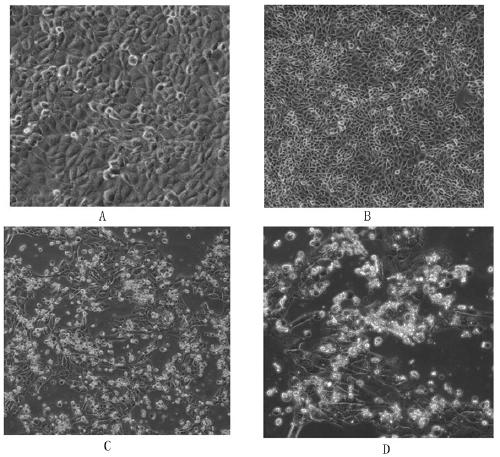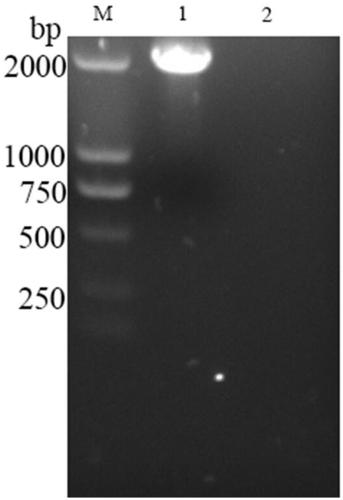Construction and identification methods of infectious clones of porcine circovirus type 3
A porcine circovirus and infectious cloning technology, applied in the field of microbiology, can solve the problems of economic loss and different cell lines in the pig industry, and achieve the effect of eliminating infection and believing experimental data.
- Summary
- Abstract
- Description
- Claims
- Application Information
AI Technical Summary
Problems solved by technology
Method used
Image
Examples
Embodiment
[0038] A method for constructing porcine circovirus type 3 infectious clones, the steps comprising:
[0039] (1) Circle-forming the linear DNA sequence of porcine circovirus type 3 published by NCBI on the snapgen software;
[0040] (2) Screening for independent restriction sites of DNA after circularization of porcine circovirus type 3, screening for positions with a single restriction site for ring opening;
[0041] (3) Transform the porcine circovirus type 3 DNA sequence after opening the circle, and add restriction sites at the end of the linear DNA sequence after opening the circle to obtain the rearranged linear porcine circovirus type 3 DNA sequence, specifically The DNA sequence is as follows:
[0042] aagcttgtgc ggatgcggct gcgcgggaat tgcagttgta tttcaagcca cgggggcctt 60
[0043] ggtgggatgg ttataatggg gagggtgctg ttattctgga tgatttttat gggtgggttc 120
[0044] catttgatga attgctgaga attggggaca ggtaccctct gagggttcct gttaagggtg 180
[0045] ggtttgttaa ttttgtggct aaggtatta...
PUM
 Login to View More
Login to View More Abstract
Description
Claims
Application Information
 Login to View More
Login to View More - R&D
- Intellectual Property
- Life Sciences
- Materials
- Tech Scout
- Unparalleled Data Quality
- Higher Quality Content
- 60% Fewer Hallucinations
Browse by: Latest US Patents, China's latest patents, Technical Efficacy Thesaurus, Application Domain, Technology Topic, Popular Technical Reports.
© 2025 PatSnap. All rights reserved.Legal|Privacy policy|Modern Slavery Act Transparency Statement|Sitemap|About US| Contact US: help@patsnap.com



